Backup your file backups using SimpleBackups and store it on UpCloud Object Storage.
UpCloud is one of the leading cloud providers around.
They provide fast and secure infrastructure that now, can be connected with SimpleBackups.
In this article we'll focus on their S3-compliant object storage that can be used as storage for all your backups.
Prerequisites
- Create a SimpleBackups account
- Have an UpCloud account (I'll show you how to create your UpCloud Bucket below)
1. Create your Upcloud Object Storage
-
Sign in your UpCloud account at https://hub.upcloud.com/
-
Go to https://hub.upcloud.com/login?next=/object-storage/2.0 or navigate to "Object Storage" and click on "Get Started"
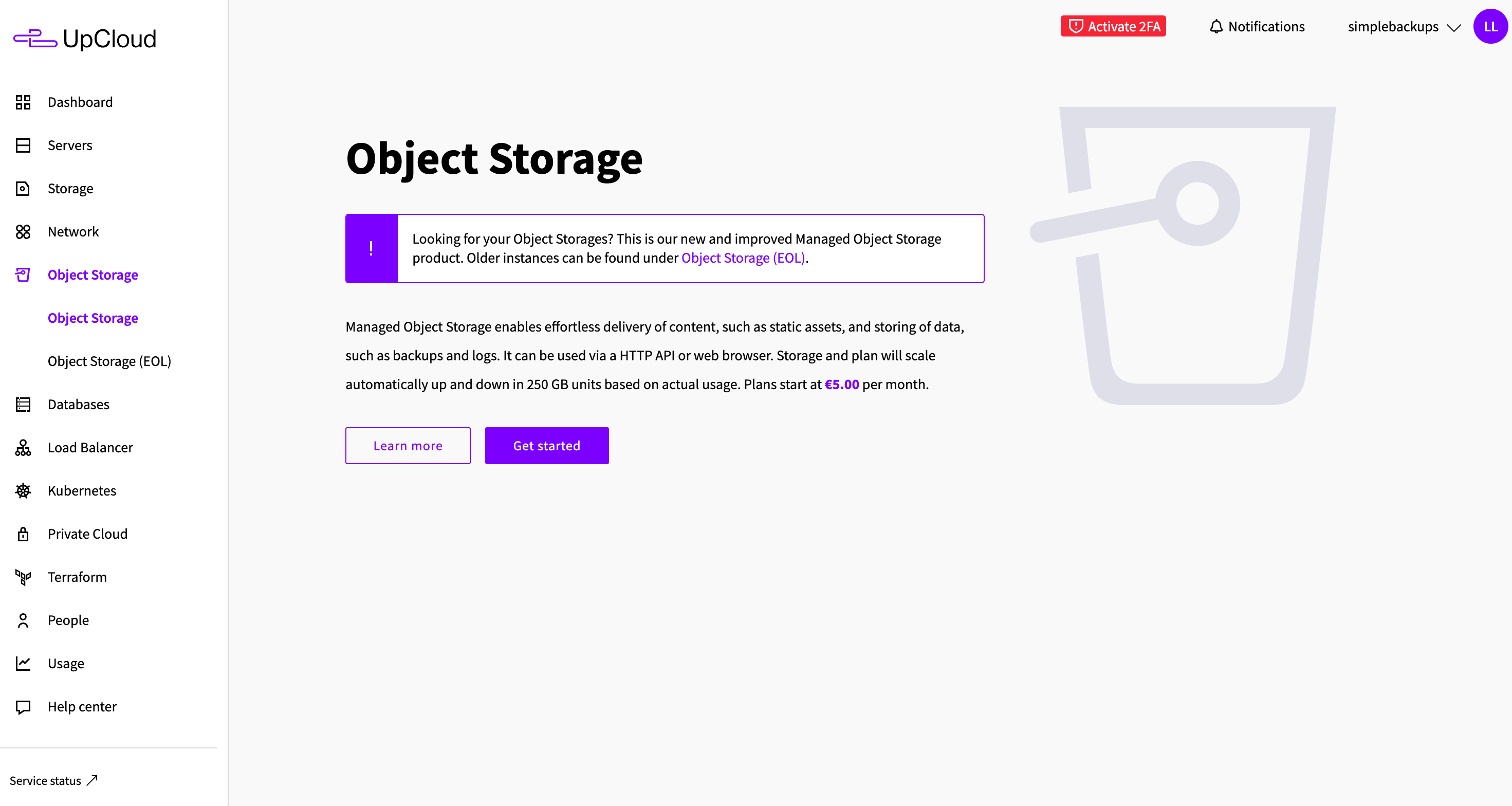
-
Select the location for your storage (think about GDPR rules, if you're an EU company)
-
Make sure to keep "Public network access" option enabled
-
Name your Object storage
-
Click "Create Object Storage".
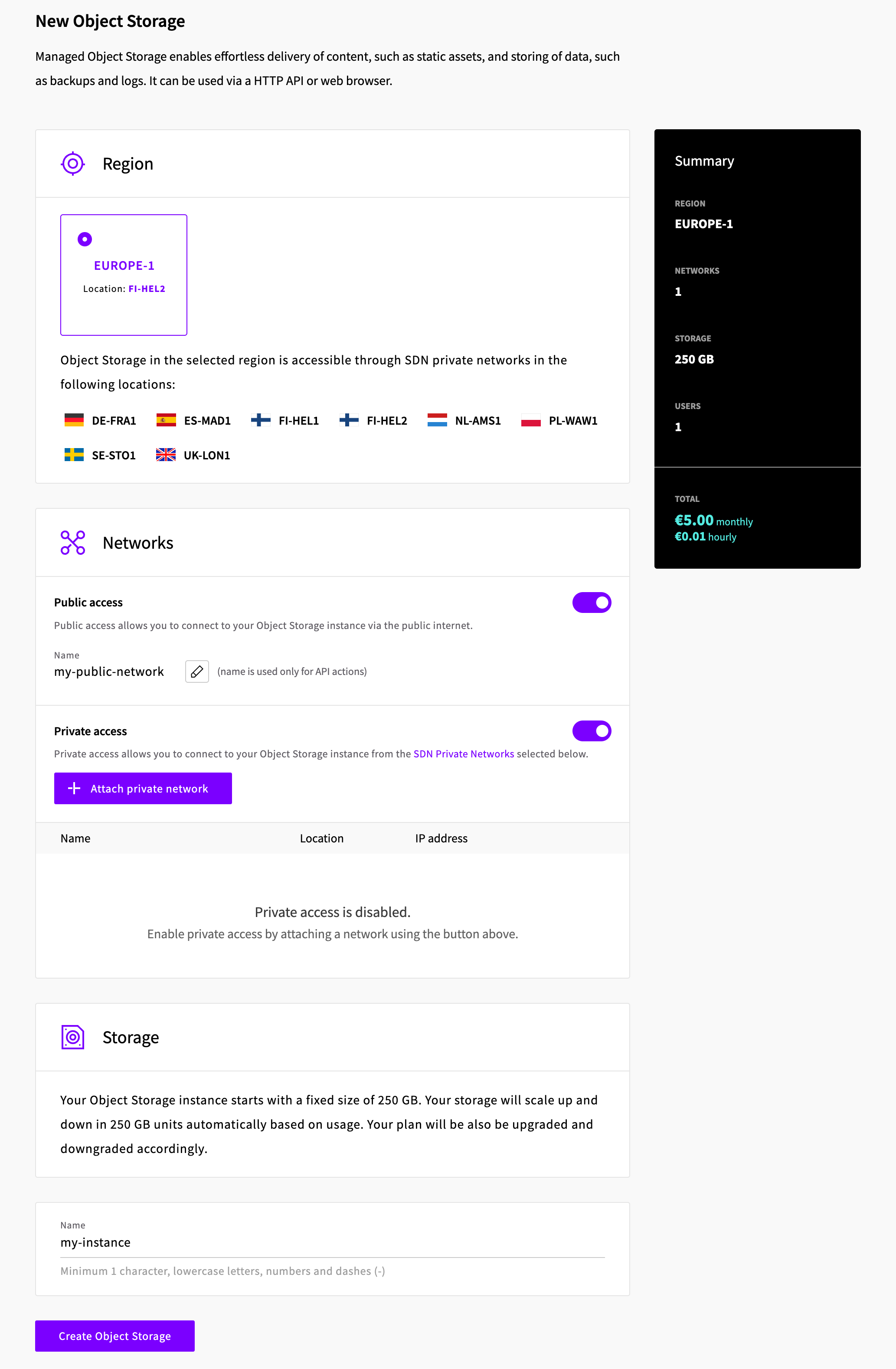
After a few seconds, your Object Storage will be created and you'll be able to see it in your list of Object Storages.
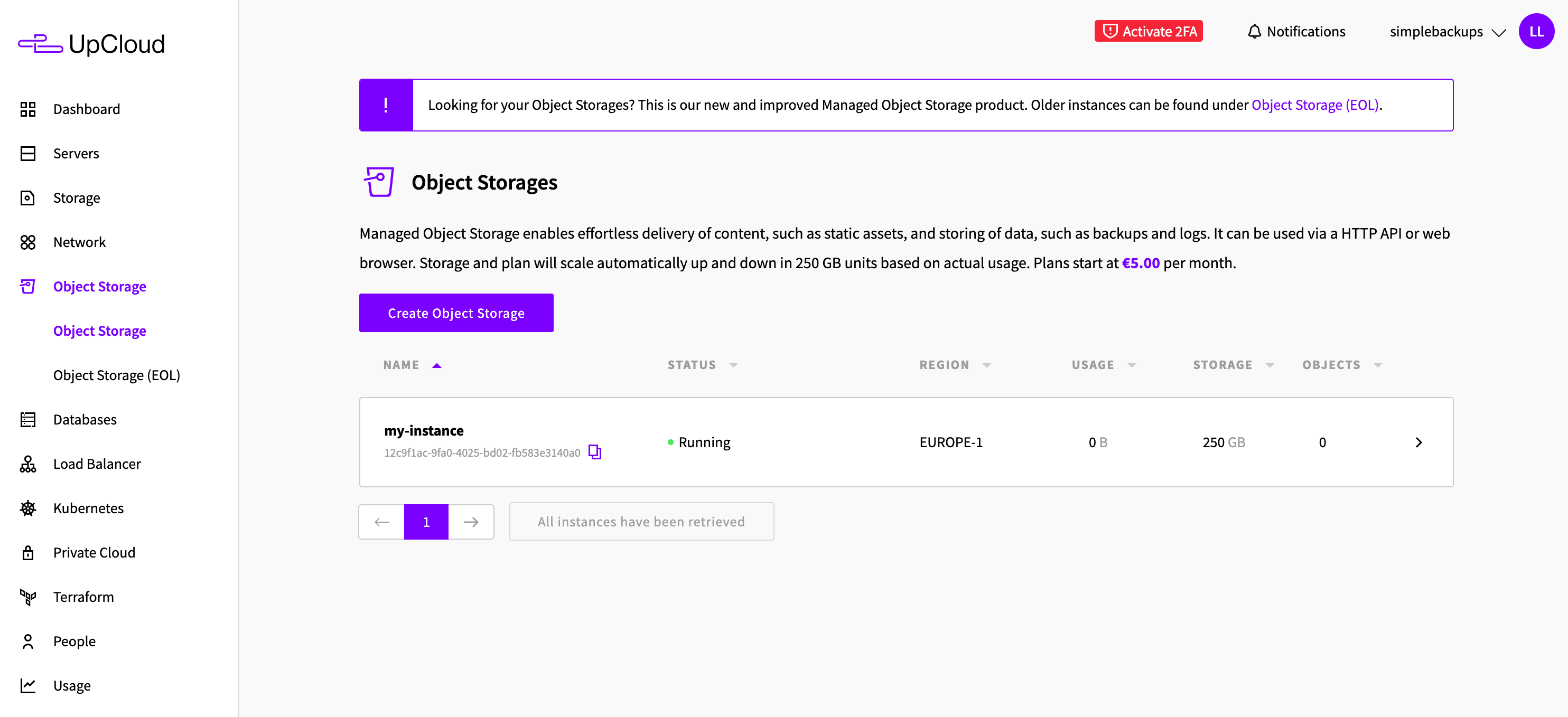
Click on the name of your Object Storage to see the details.
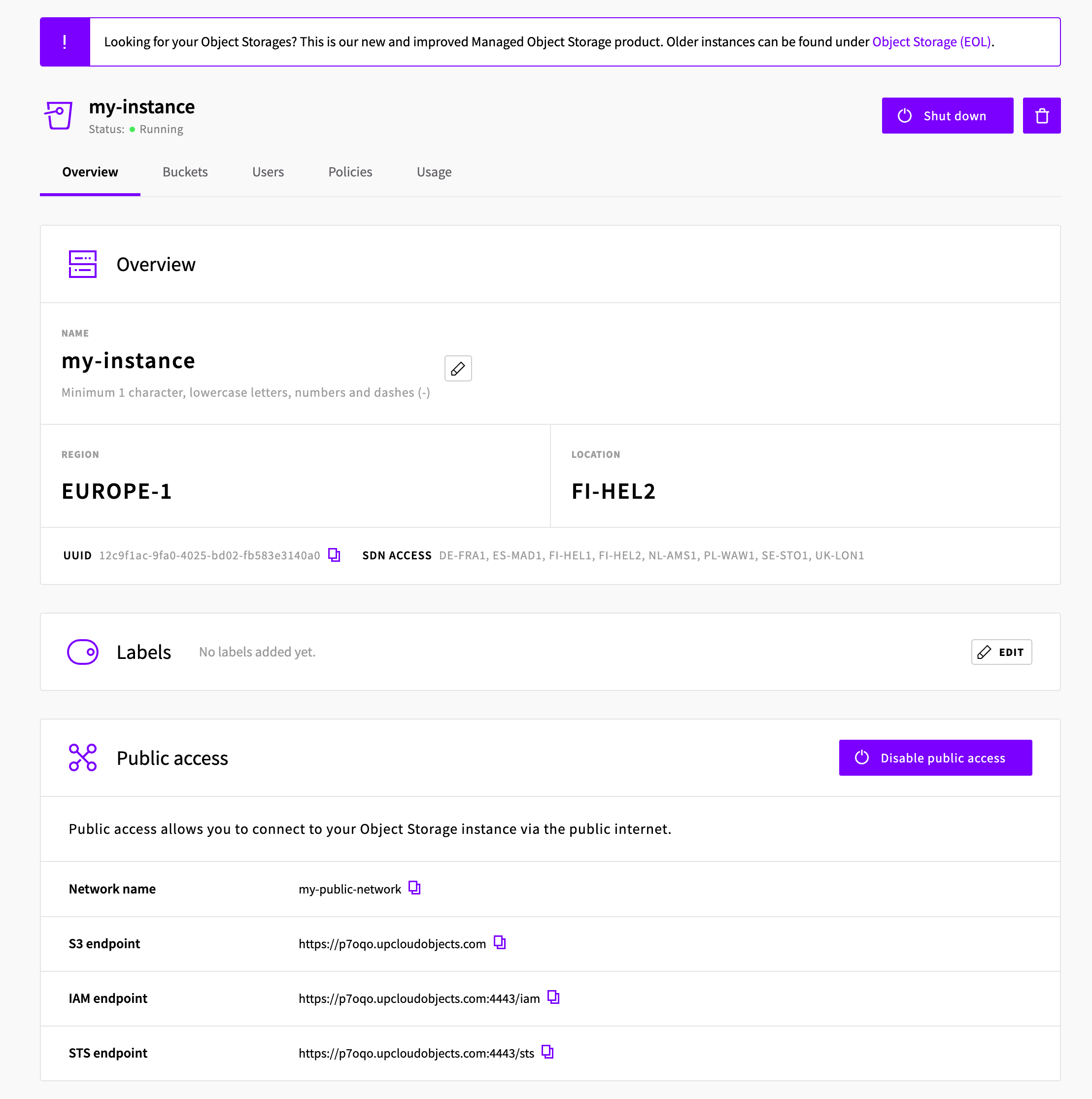
Click on Users, add a new User so we can create a new access key.
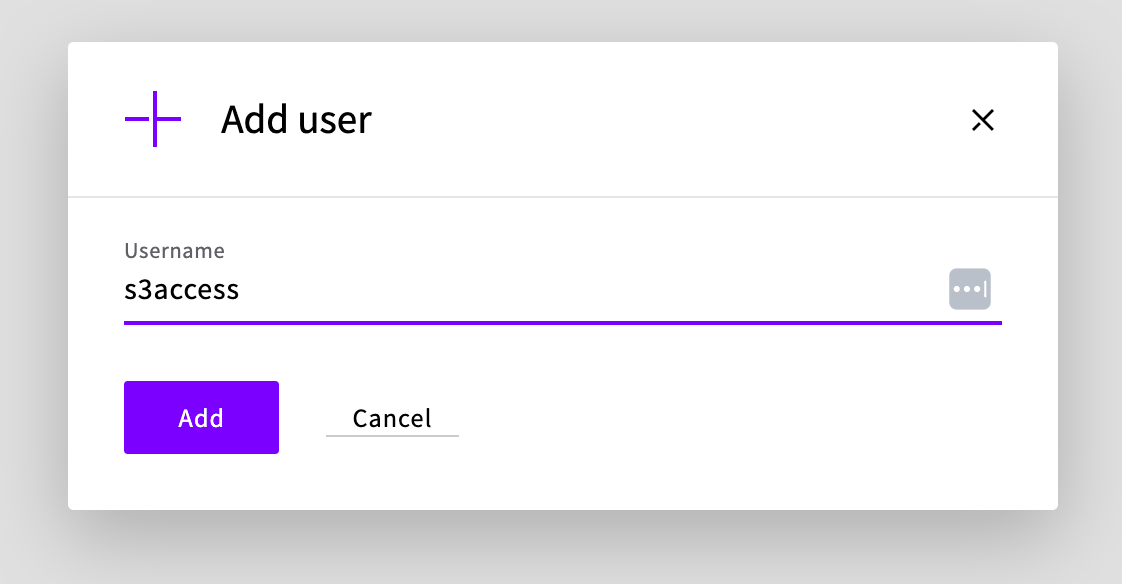
After you've created your user, click on the "+ ACCESS KEY" to generate and display your access key and secret key.
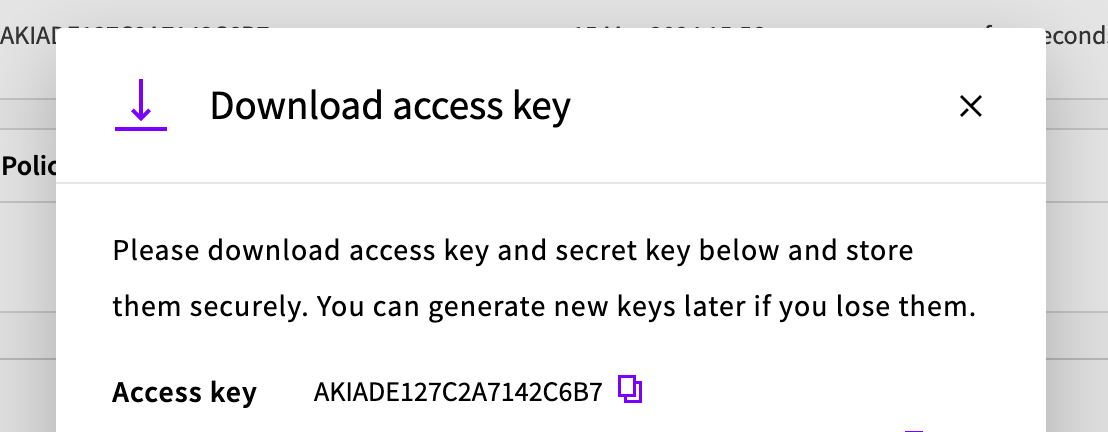 Make sure to keep these keys safe, as you won't be able to see the secret key again. If you lose it, you'll have to create a new one.
Make sure to keep these keys safe, as you won't be able to see the secret key again. If you lose it, you'll have to create a new one.
2. Create your UpCloud Bucket
With the Access Key and Secret Key, you can now create a new bucket using the aws CLI or any S3-compatible client.
Here's an example using the aws CLI:
aws s3api create-bucket --bucket {bucket-name} --profile={profile}
{
"Location": "/bucket-sbio"
}
Replace {bucket-name} with the name of your bucket and {profile} with the name of your Upcloud profile.
You can read more about getting started with UpCloud Object Storage using the aws CLI client in UpCloud's documentation.
What would you like to back up?
- Select "Files" (in this article we're creating a Files backup only)
- Select the server on which your files are stored
How often should we make this backup?
-
Select your schedule option (here we picked a daily schedule) You can select a pre-defined schedule (daily, weekly, monthly) or a custom option allowing you to schedule it whenever you want to use CRON syntax.
-
Example of CRON schedule for "20:00 every Tuesday" =
0 22 * * 2Finally, the "On demand" option won't schedule anything but will allow you to trigger the backup manually or using our API.
-
Define the backup retention, which is the number of backups you want to keep (kind of the history length of your backup if you prefer)
Choose the files you need to back up
- Define the files & folder you want to include or exclude
- Validate this step (we'll make sure we can access to these folders before moving to the next step)
Finalize and create
- Pick the name of your backup (this is how it will be displayed in SimpleBackups interface) and where you want to store it.
- Select your Storage (see below)
Connect your UpCloud Bucket
- In the "Finalize and create" step, select "Remote storage" and click on "Connect a new storage".
- Select "UpCloud" as storage provider and fill in the "Connect your storage" form with the information from step 1.
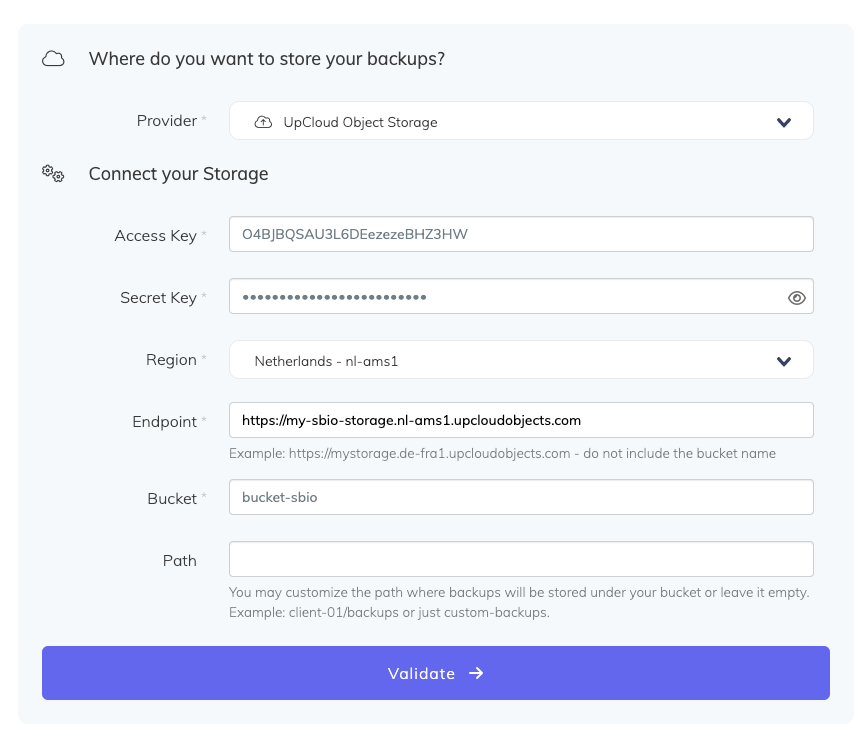
You'll have to input :
- Key: Access Key described in step 1
- Secret: Secret Key described in step 1
- Region: Bucket location described in step 2
- Bucket: Bucket name described in step 2
- Endpoint: Storage endpoint described in step 1. Make sure not to include the bucket name but only the storage (as described in the helper).
- Give your storage a name (usually we like to use the Bucket name) and click on "Save new storage".
Congratulations, you now have your files backed up on UpCloud!
Run it once manually (using the "Run" backup button from the backups list), and you'll trigger your first backup!